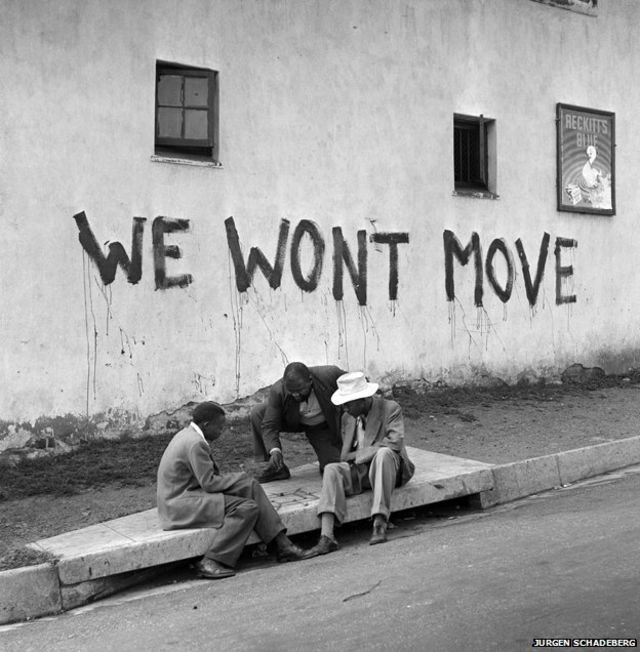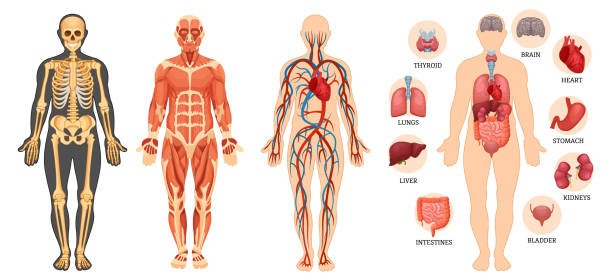
- Afrikaans Grade 8
- Creative Arts Grade 8
- Dance studies Grade 8
- Dramatic Arts Grade 8
- EMS Grade 8
- English Grade 8
- Geography Grade 8
- Grade 8 Natural Science
- IsiZulu Grade 8
- IsiNdebele Grade 8
- Free Teaching Resources
- Universities
- Public Colleges
- Private Colleges
- N6 Question Papers and Memorandums with Study Guides
- N5 Question Papers and Memorandums with Study Guides
- N4 Question Papers and Memorandums with Study Guides
- N3 Question Papers and Memorandums with Study Guides
- N2 Question Papers and Memorandums with Study Guides
- N1 Question Papers and Memorandums with Study Guides
- Latest Updates
- Learning Content

Group Areas Act Essay: A Grade 9 Perspective

The Group Areas Act, implemented in South Africa in 1950, was one of the cornerstones of the apartheid regime. It’s a subject that remains relevant in our history lessons today, highlighting the stark racial divisions that were legally enforced in the country. In this essay, We will explore what the Group Areas Act was, why it was implemented, and its long-lasting effects on South African society.
The Group Areas Act, as explored from a Grade 9 perspective, was a significant piece of legislation in South Africa’s apartheid era. Enacted in 1950, it segregated urban areas into different neighborhoods based on race. Motivated by a desire to maintain racial purity, economic control, and social engineering, the Act led to forced removals, social disintegration, economic disparities, and long-lasting psychological impacts. The law’s purpose was to create physical barriers between racial groups, reinforcing stereotypes, and ensuring white dominance. Studying this act offers a vital historical lesson on the importance of justice, equality, and human dignity, and it serves as a reminder to strive for a more inclusive society.
What Was the Group Areas Act?
The Group Areas Act was legislation that divided urban areas into distinct neighborhoods based on racial lines. The law designated specific regions where different racial groups could live, work, and own land. The primary purpose was to segregate the population and ensure that racial groups did not mix.
The Motivation Behind the Act
The apartheid government believed in the separation of races, viewing it as necessary for maintaining white supremacy. The Group Areas Act was one of the many laws enacted to create physical barriers between racial groups.
- Racial Purity : The government sought to preserve the perceived purity of the white race by preventing intermingling with other racial groups.
- Economic Control : By segregating areas, the government could control where non-white individuals could own property and run businesses, thus ensuring economic dominance by the white population.
- Social Engineering : The Act was also a tool for social engineering, reinforcing stereotypes and prejudices by keeping races physically apart.
Consequences of the Group Areas Act
The implementation of the Group Areas Act had severe and far-reaching consequences.
- Forced Removals : Thousands of non-white South Africans were forcibly removed from their homes and relocated to racially designated areas. Many lost their properties and livelihoods.
- Social Disintegration : Families and communities were torn apart, leading to a loss of cultural heritage and social cohesion.
- Economic Disparities : The Act contributed to significant economic inequalities, as non-white South Africans were often moved to less desirable areas with fewer opportunities.
- Psychological Impact : The humiliation and dehumanization experienced during forced removals left deep psychological scars that continue to affect individuals and communities.
The Group Areas Act wasn’t just a law; it was a systematic and cruel means to segregate and control the South African population. Its effects were devastating, tearing apart communities, perpetuating economic inequalities, and leaving a legacy of pain and division.
Studying the Group Areas Act as a Grade 9 student, I am struck by the power that laws can have, both to protect and to harm. The Act serves as a stark reminder of the importance of justice, equality, and human dignity in our legal system. It also underscores the necessity of remembering our history, so we may learn from it and strive to create a more inclusive and compassionate society.
Related Posts

Difference Between Plant Cell and Animal Cell for Class 9
Difference Between Plant Cell and Animal Cell for Class 9: For a class 9 student, understanding the difference between plant cells and animal cells...

Grade 9 Natural Science Questions and Answers 2022
Grade 9 Natural Science Questions and Answers for 2022 learners Grade 9 Natural Science: Multiple-Choice Questions The primary energy source used in Eskom power...

Geography Grade 9 Term 3 Past Papers
The Grade 9 Term 3 Geography past papers for September provide students with an invaluable resource to test their understanding, refine exam strategies, and...

Natural Sciences Grade 9 Textbook and Guides pdf
Natural Sciences Grade 9 Textbook and Guides for Teachers in pdf Students Guides Teachers Guides


Natural Science Grade 9 Term 3 Test Papers pdf
Preparing for the Natural Science Grade 9 Term 3 examination? Equip yourself with the best resources to achieve outstanding results. We are thrilled to...
Previous Story
In What Form do Plants Absorb Nitrogen?
Hospital security supervisor job description in south africa.
Group Areas Act No. 41 of 1950
South Africa's Apartheid Segregation Act
William Campbell/Getty Images
- American History
- African American History
- Ancient History and Culture
- Asian History
- European History
- Latin American History
- Medieval & Renaissance History
- Military History
- The 20th Century
- Women's History
- Postgraduate Certificate in Education, University College London
- M.S., Imperial College London
- B.S., Heriot-Watt University
On April 27, 1950, the Group Areas Act No. 41 was passed by the apartheid government of South Africa. As a system, apartheid used long-established race classifications to maintain the dominance of the colonial occupation of the country. The primary purpose of apartheid laws was to promote the superiority of whites and to establish and elevate the minority white regime. A suite of legislative laws was passed to accomplish this, including Group Areas Act No. 41, as well as the Land Act of 1913 , the Mixed Marriages Act of 1949 and the Immorality Amendment Act of 1950 : all of these were created to separate the races and subjugate nonwhite people.
South African race categories were set up within a few decades after the discovery of diamonds and gold in the country during the mid-19th century: native-born Africans ("Blacks," but also called "kaffirs" or "Bantu"), Europeans or European-descended ("Whites" or "Boers"), Asians ("Indians") and mixed raced ("Coloured"). The 1960 South African census showed that 68.3% of the population were African, 19.3% were White, 9.4% Coloured, and 3.0% Indian.
Restrictions of the Group Areas Act No. 41
The Group Areas Act No 41 forced physical separation and segregation between races by creating different residential areas for each race . Implementation started in 1954 when people were first forcibly removed from living in "wrong" areas, leading to the destruction of communities.
The Act also restricted ownership and the occupation of land to groups as permitted, meaning that Africans could neither own nor occupy land in European areas. The law was also supposed to apply in reverse, but the result was that land under Black ownership was taken by the government for use by whites only.
The government set aside ten "homelands" for relocated non-white residents, mostly scattered bits of unwanted territories, based on ethnicity among the Black communities. These homelands were granted "independence" with limited self-rule, the main purpose of which was to delete the homeland residents as citizens of South Africa, and cut back on the government's responsibility for providing housing, hospitals, schools, electricity, and water supplies.
Implications
However, the Africans were a significant economic source in South Africa , in particular as a labor force in the cities. Pass Laws were established to require non-whites to carry passbooks, and later "reference books" (similar to passports) to be eligible to enter the "white" parts of the country. Worker's hostels were established to accommodate temporary workers, but between 1967 and 1976, the South African government simply stopped building homes for Africans at all, leading to severe housing shortages.
The Group Areas Act allowed for the infamous destruction of Sophiatown, a suburb of Johannesburg. In February 1955, 2,000 policemen began removing Sophiatown residents to Meadowlands, Soweto and established the suburb as an area for whites only, newly called Triomf (Victory). In some cases, the nonwhites were loaded onto trucks and dumped into the bush to fend for themselves.
There were serious consequences for people who didn't comply with the Group Areas Act. People found in violation could receive a fine of up to two hundred pounds, prison for up to two years, or both. If they didn't comply with forced eviction, they could be fined sixty pounds or face six months in prison.
Effects of the Group Areas Act
Citizens tried to use the courts to overturn the Group Areas Act, though they were unsuccessful each time. Others decided to stage protests and engage in civil disobedience, such as sit-ins at restaurants, which took place across South Africa during the early 1960s.
The Act hugely affected communities and citizens across South Africa. By 1983, more than 600,000 people had been removed from their homes and relocated.
Colored people suffered significantly because housing for them was often postponed because plans for zoning were primarily focused on races, not mixed races. The Group Areas Act also hit Indian South Africans especially hard because many of them resided in other ethnic communities as landlords and traders. In 1963, approximately a quarter of Indian men and women in the country were employed as traders. The National Government turned a deaf ear to the protests of the Indian citizens: in 1977, the Minister of Community Development said that he wasn't aware of any cases instances in which Indian traders who were resettled that didn't like their new homes.
Repeal and Legacy
The Group Areas Act was repealed by President Frederick Willem de Klerk on April 9, 1990. After apartheid ended in 1994, the new African National Congress (ANC) government headed by Nelson Mandela was faced with an enormous housing backlog. More than 1.5 million homes and apartments in the urban areas were located in informal settlements without property titles. Millions of people in rural areas lived in terrible conditions, and urban Blacks resided in hostels and shacks. The ANC government promised to build one million homes within five years, but most of them were of necessity located in developments on the outskirts of cities, which have tended to sustain existing spatial segregation and inequality.
Great strides have been undertaken in the decades since apartheid ended, and today South Africa is a modern country, with an advanced highway system and modern homes and apartment buildings in the cities available to all residents. While nearly half of the population was without formal housing in 1996, by 2011, 80 percent of the population had a home. But the scars of inequality remain.
- Bickford-Smith, Vivian. " Urban History in the New South Africa: Continuity and Innovation since the End of Apartheid. " Urban History 35.2 (2008): 288–315. Print.
- Christopher, A.J. " Apartheid Planning in South Africa: The Case of Port Elizabeth ." The Geographical Journal 153.2 (1987): 195–204. Print.
- ---. " Urban Segregation in Post-Apartheid South Africa ." Urban Studies 38.3 (2001): 449–66. Print.
- Clark, Nancy L., and William H. Worger. "South Africa: The Rise and Fall of Apartheid." 3rd ed. London: Routledge, 2016. Print.
- Maharaj, Brij. " Apartheid, Urban Segregation, and the Local State: Durban and the Group Areas Act in South Africa ." Urban Geography 18.2 (1997): 135–54. Print.
- ---. " The Group Areas Act and Community Destruction in South Africa ." Urban Forum 5.2 (1994): 1–25. Print.
- Newton, Caroline, and Nick Schuermans. " More Than Twenty Years after the Repeal of the Group Areas Act: Housing, Spatial Planning and Urban Development in Post-Apartheid South Africa ." Journal of Housing and the Built Environment 28.4 (2013): 579–87. Print.
- What Was Apartheid in South Africa?
- The End of South African Apartheid
- Understanding South Africa's Apartheid Era
- A Brief History of South African Apartheid
- South Africa's Apartheid Era Population Registration Act
- Women's Anti-Pass Law Campaigns in South Africa
- The Origins of Apartheid in South Africa
- The Prohibition of Mixed Marriages Act
- Pre-Apartheid Era Laws: Natives (or Black) Land Act No. 27 of 1913
- Grand Apartheid in South Africa
- Apartheid Era Signs - Racial Segregation in South Africa
- South Africa's Extension of University Education Act of 1959
- South African Apartheid-Era Identity Numbers
- What Is a Literacy Test?
- Pass Laws During Apartheid
- Quotes From PW Botha, Prime Minister of South Africa
- International
- Schools directory
- Resources Jobs Schools directory News Search

The Group Areas Act in South Africa (1950)
Subject: History
Age range: 14-16
Resource type: Worksheet/Activity
Last updated
20 May 2020
- Share through email
- Share through twitter
- Share through linkedin
- Share through facebook
- Share through pinterest

Creative Commons "Attribution"
Your rating is required to reflect your happiness.
It's good to leave some feedback.
Something went wrong, please try again later.
This resource hasn't been reviewed yet
To ensure quality for our reviews, only customers who have downloaded this resource can review it
Report this resource to let us know if it violates our terms and conditions. Our customer service team will review your report and will be in touch.
Not quite what you were looking for? Search by keyword to find the right resource:

IMAGES
VIDEO
COMMENTS
The Group Areas Act, as explored from a Grade 9 perspective, was a significant piece of legislation in South Africa's apartheid era. Enacted in 1950, it segregated urban areas into different neighborhoods based on race. Motivated by a desire to maintain racial purity, economic control, and social engineering, the Act led to forced removals ...
The Group Areas Act was fashioned as the "cornerstone" of Apartheid policy and aimed to eliminate mixed neighbourhoods in favour of racially segregated ones which would allow South Africans to develop separately (South African Institute for Race Relations, 1950: 26). When the Group Areas Act (GAA) was passed in 1950, it imposed control over ...
Case study: Group Areas Act: Sophiatown forced removal Sophiatown was established in 1904. Before 1913 black South Africans had freehold rights, and they bought properties in the suburb. By the 1920s whites had moved out, leaving behind a vibrant community of blacks, coloureds, Indians and Chinese.
Group Areas Act. Location: South Africa. Group Areas Act, one of three acts, the first promulgated in 1950, in South Africa that provided for the division of the country into areas based on racial categories determined by the government. This occurred during the country's apartheid era, when the white minority government implemented policies ...
The Group Areas Act of 1950 The Pass Laws of 1952 The Separate Amenities Act of 1953 The Bantu Education Act of 1953 143 other apartheid laws controlled every aspect of life. Apartheid laws were designed to achieve strict racial separation and firm social and economic control. Activity 9: How apartheid laws affected people's lives
Case Study: Group Areas Act: Sophiatown - ESSAY !!! Key question: How was the Group Areas Act of 1950 enforced in a place called Sophiatown in 1955. Apartheid and the Group Areas Act had a negative and traumatic effect on people. The National Party apartheid government introduce laws that violated the human rights of millions of South Africans.
The 1960 South African census showed that 68.3% of the population were African, 19.3% were White, 9.4% Coloured, and 3.0% Indian. Restrictions of the Group Areas Act No. 41 The Group Areas Act No 41 forced physical separation and segregation between races by creating different residential areas for each race .
GRADE LEVEL: 9-12 RELATED ACADEMIC SUBJECTS: World History, American History, Civics/Government, ... • Scenario 3: 1949-Act No 55, Prohibition of Mixed Marriages Act: 1950- Act No 30, Population Registration Act ... 1945-Act No 25 Native Consolidation Act • Scenario 5: 1950-Act No 41, Group Areas Act • Scenario 6: 1950-Act No 44 ...
Group Areas Act was the title of three acts of the Parliament of South Africa enacted under the apartheid government of South Africa.The acts assigned racial groups to different residential and business sections in urban areas in a system of urban apartheid.An effect of the law was to exclude people of colour from living in the most developed areas, which were restricted to Whites (e.g. Sea ...
racial groups. This essay aims to critically analyze the importance of the Group Areas Act in South African history, particularly for Grade 9 students who are learning about the country's apartheid era. Historical Context Before delving into the importance of the Group Areas Act, it is crucial to understand the historical context in which it ...
Group Areas Act Date: _____ Activity 2. Group Areas Act. Activity 2. 1. Group Areas Act 2. Beaches, toilets and other amenities were segregated. Beaches and certain public toilets were only meant for white people. 3. Group Areas Act. 4. Ms David becomes emotional and bitter when she remembered what happen during the time they were evicted from ...
Home Page | South African History Online
Activity 3. Group Areas Act; Population group are Africans. People are free. Graffiti on a wall which states that they will not move. 2000 policemen armed with guns, knobkerries and rifles began to move the community of Sophiatown out of their homes. People were move far away from the town or CBD area.
• The group met for the first time in January 1947 and considered several critical issues. • It concluded that it should work to develop first a declaration rather than a treaty. • The group also decided that the declaration should contain civil and political as well as economic and social rights.
The Group Areas Act But the Group Areas Act of 1950, as amended almost every year since then, was far more far-reaching than any previous legislation. Control was imposed throughout the country over inter racial property transactions and inter-racial changes in occupation. Large areas in many towns have been proclaimed defined areas, in which
3.1 Population Registration Act. This Act formed the basis for classifying people according to their race. 3.2 Mixed Marriages Act banned marriages between people of different race groups. 3.3 Immorality Act banned social and sexual contact between people of different race groups. 3.4 Group Areas Act defined areas for each race group to live in.
• explain the impact of the Group Areas Act and forced removals on the lives of many people; • explain what is meant by non-violent resistance to apartheid; and • explain why 1960 and 1990 were turning points in the struggle for democracy. The content of this lesson is linked to Grade 9: Turning
Verwoerd's 1948 policy of apartness/separateness/apartheid could be seen as a white response to the fear of black people whose land and resources were forcibly taken with the implementation of the ...
apartheid provides a stimulus to re-examine 'group areas'.5 Yet this work has not, so far, addressed 'group areas' in any detail. Unlike Bantu Education, for example, the Group Areas Act was not preceded by an elaborate and well-known commission, chaired by a leading figure in the framing and development of apartheid policy like W.W.M. Eiselen.
Created Date: 1/3/2014 4:58:42 PM
Forced Removals Under the Group Area's Act: District Six The Group Areas Act No. 41 was a piece of Apartheid legislation officially commenced on July 7 th , 1950. This act, along with its subsequent amendments, gave the government the power to divide urban areas into separate zones, segregated by race.
The Group Areas Act in South Africa (1950) Subject: History. Age range: 14-16. Resource type: Worksheet/Activity. File previews. docx, 827.98 KB. pptx, 2.46 MB. A short presentation on the Group Areas Act under apartheid South Africa. This also includes a group work activity on race perspectives.